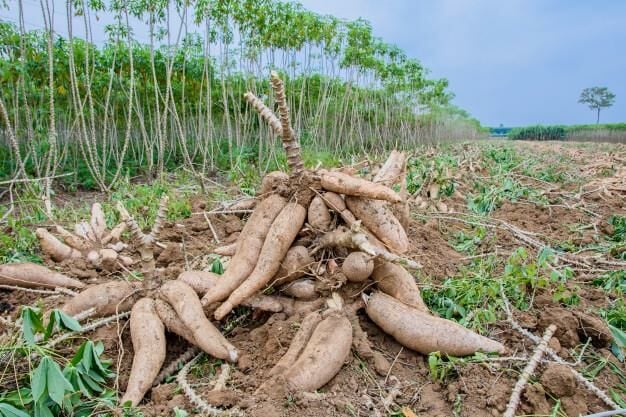Drought hits Thailand’s cassava yield, imports to fill shortfall predicted

A projected decrease in Thailand’s yield of cassava and its by-products from 11 million tonnes last year to an estimated 9 million tonnes this year has been attributed to drought conditions. This situation is further compounded by more farmers opting for sugar cane cultivation instead.
Ronnarong Phoolpipat, director-general of the Foreign Trade Department, revealed that despite the drought-induced shortfall in production, demand for Thailand‘s tapioca and other cassava products remains high. He noted that purchasers are eager to acquire any available quantities.
In view of the stable demand and shrinking supply, Ronnarong suggests that tapioca prices will continue to hold up throughout the year. He urges farmers not to compromise on quality by prematurely harvesting smaller, unripe cassava roots during periods of high prices. He reported that fresh cassava root is currently priced at 3.1 to 3.55 baht per kilogram, above the guaranteed price of 2.5 baht per kilogram.
The downturn in this year’s output follows a buoyant 2022 season when Thailand exported 11 million tonnes of cassava-based products, achieving revenues of US$4.4 billion. This represented a rise of 6.9% in volume and 11.2% in value compared to the previous year. However, for the first five months of this year, Thailand’s cassava exports have decreased, both in terms of volume and value, by 21% and 19% respectively.
Amidst a reduced demand from China for alcohol production, the free-on-board (FOB) price of tapioca chips has dropped by 7% to US$265 per tonne. In contrast, the FOB price for cassava flour has risen by 5% to US$570 per tonne.
China retains the highest market share as Thailand’s primary cassava export destination, absorbing 65% of its total exports. The annual 8 million tonnes of cassava products shipped to China consist of tapioca chips/pellets (69% of the total), tapioca flour (30%) and cassava solid waste (1%). Other significant markets are Japan (7%), Indonesia (5%), South Korea (3%), and other countries (20%).
Despite a predicted production of 36 million tonnes of fresh cassava root, domestic demand is expected to outstrip supply. To bridge the projected shortfall of 4 million tonnes, the country plans to import around 2.4 million tonnes of cassava chips from its neighbours, Laos and Cambodia. However, even this volume might be scaled down due to drought-like conditions in those neighbouring countries, according to Ronnarong.
Latest Thailand News
Follow The Thaiger on Google News:


























